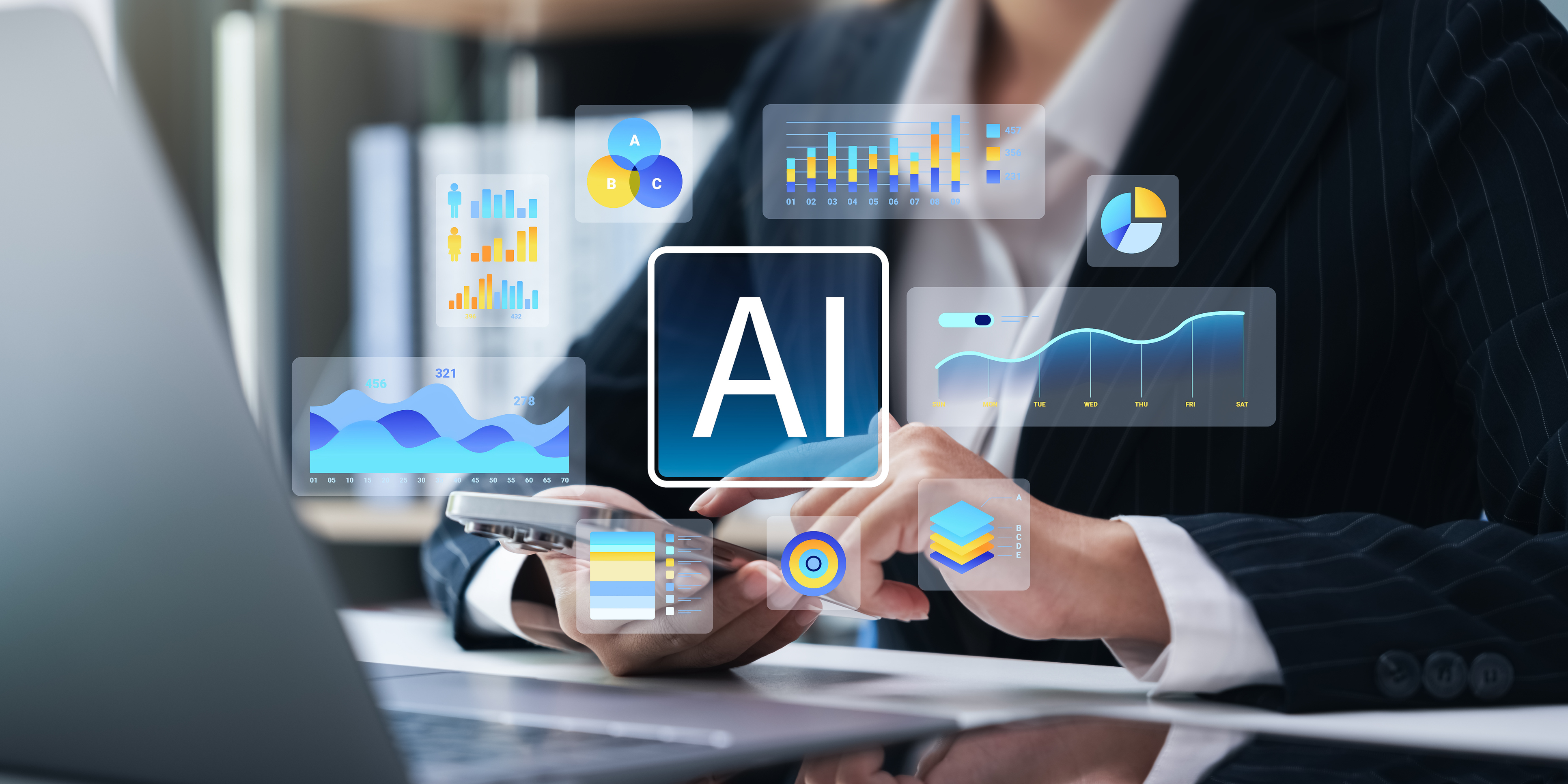
Artificial intelligence could unlock financial institutions’ efficiency and rocket employees’ productivity — if they use it.
AI adoption in financial institutions hinges on employees becoming confident and competent users. Upskilling those employees requires a combination of leadership, technology and talent development. Several banks are setting goals and metrics around AI adoption, reassuring employees they won’t be replaced by robots, educating them about acceptable uses and teaching them how to write prompts for a chatbot.
Bank of America Corp. is educating both the senior management who will direct AI investment dollars, as well as the business line employees, about the positives and negatives of artificial intelligence, says Hari Gopalkrishnan, who leads the bank’s technology team for its consumer, business and wealth management divisions. This education builds a common understanding and leads to better conversations around revenue and expense opportunities or ways to manage and compensate for the risks.
Gopalkrishnan says the bank is also leveraging its internal educational resource, called The Academy, to provide employees with AI fundamentals and teach skills like prompt engineering. Prompt engineering is used in generative AI, a technology that produces content based on user prompts. To get useful answers or content, users need to write prompts with careful and specific instructions that can guide a generative model towards the output the user desires. The training also helps employees identify good use cases by helping them think about the activities that constitute their job, flagging tasks that are ripe for automation or AI as potential use cases.
“You can easily spend a ton of money and not get any value,” Gopalkrishnan says. “How much money is worth spending on a given activity based on the return on investment? … How do you quantify a return on investment to make sure that you’re applying AI to the right problem?”
Gopalkrishnan highlights one pilot that leverages generative AI to help relationship bankers prep for client meetings. Bank of America broke down the tasks that went into client prep: looking up past meeting notes with the client, researching the industries or trends the client was interested in, creating an outline and editing and finalizing the prep document. The bank still wants its relationship banker to polish and finalize the document but is exploring how it can leverage AI to compile and summarize past meetings or identify relevant information as part of research. Reducing the time it takes a relationship banker to produce client memos means the banker can take on additional clients. While this application is still a pilot, Gopalkrishnan says it has been used in “about 200 different client memos” in a week and a half.
Nearly three-quarters of the 50 largest banks in the world offer AI-specific training to employees, according to a talent report from Evident Insights, a research firm that tracks large bank AI initiatives. The report found that training seems to parallel the institution’s release of new generative AI productivity tools that require “phased trials by ‘super-users’ or ‘sandboxed’ environments to experiment in a risk-free setting.”
Employee training around generative AI is important for a couple of reasons, says Peter Chapman, chief technology officer at New York-based Grasshopper Bank. The technology can be unpredictable and produce different results, and employees will use many of these tools unsupervised in their daily roles.
The $939 million Grasshopper has a goal of saving 2,000 hours a month by the end of the year, which it aims to achieve through new AI deployments and greater employee usage of available tools through its Google enterprise technology suite. To do that, Chapman is educating and training all employees at the bank, which is a unit of Grasshopper Bancorp, to become “confident” users of AI, including generative AI.
Chapman starts the training emphasizing that these tools are not meant to replace jobs but “elevate” employees’ work toward higher-value tasks. He goes over AI fundamentals and how generative AI differs from other types of AI, the Google AI tools, the basics of prompt engineering and parameters for safe and compliant uses. He also explains to employees the need for critical thinking and skepticism when it comes to generative AI’s output.
Wausau, Wisconsin-based IncredibleBank, the bank unit of River Valley Bancorp., also has a corporate strategic goal to increase active AI users to further adoption throughout the institution. Phil Suckow, vice president of innovation at the $2 billion bank, acknowledges that many employees aren’t comfortable with the tech or worry it will take their jobs. To reduce the stigma around using AI tools for work, one executive hosted a “lunch and learn” to share how she uses AI in her daily life, hoping to address some of the stigma it might carry if an employee uses it in their work.
Next, the bank will highlight the AI functions that are part of Microsoft Corp.’s Copilot in its upcoming quarterly employee education. And finally, Samuel Golbach, IncredibleBank’s senior vice president of information technology, is meeting with all teams within the bank to discuss potential AI applications based on their workflow.
One way Golbach is encouraging AI use is by creating a Copilot chatbot that can answer questions about the bank’s policies and procedures for the operations team, he says. He’s also instructed his IT team to direct any queries they would look up in a web search to Copilot instead. The increased conversations and training have paid off. Golbach says the number of active Copilot users has increased from about 30 at the end of 2024 to 130.
IncredibleBank already leverages an AI tool that assists employees when responding to customer chats. The bank trained the AI on its customer experience playbook so its responses would be fast, accurate and on-brand, but stressed to employees that they need to review the response for accuracy before sharing the reply with customers.
Grasshopper’s Chapman recommends that, in addition to formal training and education, financial institutions find “champions” throughout their organizations who use AI tools in their jobs and can share their experience and insights with others. Grasshopper has created a feedback loop across the bank so executives can learn more about how employees are using AI tools and disseminate those applications and use cases to other groups or individuals. The bank can also track and identify who its power users are and ask them to reach out to others across the bank for more peer-based learning. The hope is that over time, those efforts produce a culture of confident AI users who automate mundane tasks, increase productivity and drive efficiency.
“Think of Gen AI as the best possible intern you could have: It never sleeps, never gets tired and will do your bidding no matter what,” Chapman says. “But you don’t just take [what it produces] to your boss. It gets you 80% of the way there, but you’ve got to be critical in how you leverage and deploy it.”

